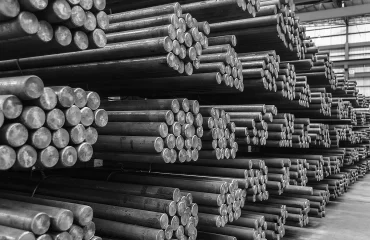body { font-family: sans-serif; line-height: 1.6; }
h1, h2, h3 { color: #333; }
img { max-width: 100%; height: auto; }
Choosing the right steel for your project can be a daunting task. Understanding the differences between raw and finished steel is crucial for making informed decisions. This comprehensive guide will delve into the key distinctions, helping you select the ideal material for your specific needs.
1. Understanding the Steelmaking Process: From Raw Material to Finished Product
The journey of steel begins with raw materials like iron ore, coal, and limestone. These are processed in a blast furnace to produce pig iron, a high-carbon iron containing impurities. Pig iron then undergoes further refining in a basic oxygen furnace (BOF) or electric arc furnace (EAF) to reduce carbon content and remove impurities, resulting in raw steel. This raw steel, also known as steel ingots or slabs, is far from ready for use in most applications. It’s characterized by its rough surface, inconsistent dimensions, and potential for internal imperfections.
Finished steel, on the other hand, undergoes various processing steps to achieve desired properties and dimensions. These processes include hot rolling, cold rolling, and various heat treatments. Hot rolling involves shaping the steel at high temperatures, resulting in stronger but less precise dimensions. Cold rolling, performed at room temperature, yields higher precision and surface finish but at the cost of some strength. Heat treatments further refine the steel’s microstructure, enhancing its properties like hardness, toughness, and ductility.
2. Mechanical Properties: Strength, Ductility, and Hardness
Raw steel, in its ingot or slab form, possesses inherent strength but lacks the precise control over mechanical properties that finished steel offers. The strength is largely dependent on the chemical composition determined during the steelmaking process. Ductility, the ability to deform without breaking, and hardness, resistance to indentation, are less predictable in raw steel due to the presence of impurities and inconsistencies in microstructure.
Finished steel, thanks to the various processing techniques, exhibits significantly improved control over its mechanical properties. Hot-rolled steel generally demonstrates higher tensile strength and yield strength compared to cold-rolled steel, while cold-rolled steel offers superior surface finish, dimensional accuracy, and formability. Heat treatments allow for tailoring the mechanical properties to specific applications, such as increasing hardness for tools or enhancing toughness for structural components.
3. Surface Finish and Dimensional Accuracy: Precision Matters
The surface of raw steel is rough and uneven, unsuitable for most applications requiring aesthetic appeal or precise fit. The dimensions are also inconsistent, making it challenging to use directly in manufacturing processes.
Finished steel, particularly cold-rolled steel, boasts a smooth and even surface finish. The dimensional accuracy is significantly higher, allowing for precise manufacturing and assembly. This precision is crucial in industries like automotive, aerospace, and electronics where tolerances are extremely tight. Hot-rolled steel, while less precise than cold-rolled, still offers a better surface finish than raw steel.
4. Cost Comparison: Balancing Quality and Budget
Raw steel is significantly cheaper than finished steel due to the minimal processing involved. However, this lower cost comes at the expense of its limitations in terms of properties and usability. The cost of finished steel varies depending on the type of processing involved. Cold-rolled steel, with its added processing steps, is generally more expensive than hot-rolled steel.
The choice between raw and finished steel often involves a trade-off between cost and quality. For applications where high precision and surface finish are not critical, raw steel might be a cost-effective option after further processing on-site. However, for most manufacturing applications, the added cost of finished steel is justified by its improved properties and ease of use.
5. Applications: Tailoring Steel to Specific Needs
Raw steel’s primary application lies as an intermediary material in the steelmaking process. It serves as the base material that undergoes further processing to become finished steel. Some niche applications might involve using raw steel for casting or forging processes where precise dimensions are not critical.
Finished steel finds applications across a vast range of industries. Hot-rolled steel is commonly used in construction, shipbuilding, and heavy machinery due to its strength. Cold-rolled steel is preferred in automotive parts, appliances, and precision engineering due to its dimensional accuracy and surface finish. The specific type of finished steel, with its tailored properties, dictates its suitability for a given application.
In conclusion, the choice between raw and finished steel hinges on the specific requirements of the project. Understanding the differences in their properties, cost, and applications is crucial for making informed decisions that optimize both quality and budget.
SEO Tags:
- Raw Steel
- Finished Steel
- Steel Comparison
- Steel Properties
- Steel Applications




